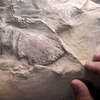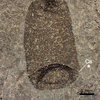The Search Beyond Our Sun: Exoplanets from the James Webb Space Telescope

The James Webb Space Telescope under construction before its launch in 2022. (NASA)
Post Author - Erik Wells
Are we alone in the universe? Is there life beyond our solar system? And if so, what place does it hold for humans? These questions have haunted and inspired philosophers, artists, and the more existentially-minded of dorm-dwelling college students for centuries. Much of that time has been spent merely pondering these ideas, but in recent years, a select group of astronomers specializing in the field of exoplanet studies has looked to them as the driving force behind their work—and an increasing source of their frustration.
Our ability to detect exoplanets (planets outside of our solar system) increased significantly when the James Webb Space Telescope (JWST) launched in 2021. Each time a planet orbits in front of its star, the star’s brightness temporarily dims. A small amount of starlight passes through the planet’s atmosphere, where atmospheric chemicals absorb specific wavelengths and leave gaps in the spectrum of light. Using a technique known as the transit method, JWST can examine those absences for signs of carbon dioxide, water, and other molecules necessary for life to thrive.
Unfortunately, the planets most similar to Earth in size and composition are often the most difficult to observe using this method. Imagine if someone on another planet was trying to examine Earth for signs of life: we only pass in front of our sun once a year, and when we do, the sun’s sheer power means the resulting dip in brightness is practically negligible.
As a result, scientists have broadened their search beyond solely “Earth twins” and have focused much of their attention on M-dwarfs. These are small red dwarf stars which are only 10 to 60% as big as the Sun and about 7% as bright. These stars are cool and dim, never threatening to overwhelm their planets with light even though their orbits are significantly tighter than Earth’s. Most exoplanets in these systems orbit their star at least every few weeks, and with 50 M-dwarfs to be found in the 60 stars closest to Earth, that means there’s an exoplanet in transit somewhere every few hours at most.
Of particular interest is the TRAPPIST-1 system. The planets here are tidally locked, meaning that the hemispheres are trapped in a permanent scorching heat and a constant freeze, respectively. However, between these two zones there is a thin slice of temperate climate in a state of eternal sunset (or sunrise, depending on how you look at it.) Four of these seven planets are in a potentially habitable zone, making this system our best bet to focus in on the search for a planet that could hold life.

Four of the seven planets in the TRAPPIST-1 system reside in a potentially habitable zone. (NASA/JPL-Caltech)
Around 30% of JWST’s time is devoted to exoplanet studies and only 175 hours have been spent on the TRAPPIST-1 system so far, but much has been learned already. Unfortunately, due to the temperamental nature of M-dwarfs, much of the data gathered in that time has proven undecipherable so far. Luckily, the JWST is expected to last for another 18 years, double its original 10-year life expectancy. There is still plenty of time to explore.
Searching for other habitable planets will take up a significant chunk of time before we can even start determining their habitability. According to the University of Montreal’s René Doyon, one possibility outside of the TRAPPIST-1 system is LHS 1140b, a watery “super-Earth” covered in a global ocean. LHS 1140b is the most likely to have retained an atmosphere out of Doyon’s shortlist of six planets, but it is only in transit four times a year, and with a dozen transits needed to gather enough data about carbon dioxide in the atmosphere, it would take three years before we know for sure—assuming JWST is even allocated to observe 1140b at the time of every transit.
The search for life beyond our sun is an always exciting, yet often frustrating one. But hopefully, the wait for answers will spur us to take action towards maintaining our own planet, so that we are not forced to rely on another.
Still want to explore the stars? Check out our Air & Space collection here for more on mission-flown NASA shuttles, the Apollo 11 program, and even meteorite fragments!
Clery, Daniel. “Could Super-Earths or Mini-Neptunes Host Life among the Stars?” Science.Org, 20 June 2024, www.science.org/content/article/could-super-earths-mini-neptunes-host-life-among-stars.
“Exoplanets - NASA Science.” NASA, NASA, science.nasa.gov/exoplanets/. Accessed 26 June 2024.
Featured Product
Joe Frazier Boxing Glove
Cool Things!

Is “Paul is Dead” Dead?: Unpacking One Of Pop Culture’s Most Enduring Conspiracy Theories

Scientists Discover Hooves and Skin in Preserved Dinosaur "Mummies!"
A dinosaur discovery just in time for Halloween! In a new analysis of a group of fossils from Wyoming, Scientists have determined this group of fossils are dinosaur “mummies,” with preserved skin and even hooves.

Scientists Record a Bat Catching Birds Mid-Flight!
Bats, birds, screeches, oh my! In a reverse-Hitchcock twist, a new study reveals that a species of European bat catches and eats birds mid-flight.
Specimen Deep Dives

The House that Ruth Built: The Story of the Old Yankee Stadium

The Queen of the Skies: the Story of the Boeing 747

Old Ironsides: The USS Constitution and the Start of the U.S. Navy
Long Form Articles

The Artist Behind the Macintosh: Susan Kare and Apple Computers
While the two Steves, Jobs and Wozniak, are the most well known faces behind Apple computers, equally important to the products and culture of the company were those who crafted the experience of using their computers through design. The most notable of these visual architects was Susan Kare, a designer responsible for “humanizing” Macintosh computers.

Can I Lick It? Yes You Can!
Have you ever been unable to tell if a fossil was really a fossil, but you were too embarrassed to admit it? Have you ever wanted to lick a fossil just because, but you didn’t want to risk judgment from your peers? Well, good news! You can kill two birds with one stone! Licking a fossil can actually help you determine if it’s the real deal or just another rock.

Is It Legal To Own a Meteorite: How to Start Your Outer Space Collection!
Meteorites are some of the rarest geological specimens to be found on Earth. Of course, since these stones are not of our world, purchasing them can sometimes be a confusing process. Is it legal to own a meteorite? In short, yes! Read on for help starting your cosmic collection!



















